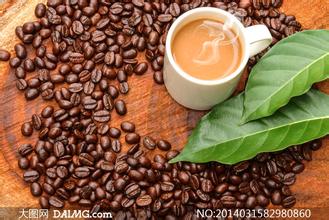Grinding degree of hand punch and siphon kettle-grinding master's manual
Grinding degree of hand punch and siphon kettle-grinding master's manual
When making siphon coffee, use a hand grinder, which is more emotional and can meet the demand. Adjust the fineness before use, and control the fineness of the coffee by adjusting the gap between the rotor and the powder. If the beans fall too fast, or if they remain unchanged for a long time, they all need to be adjusted. After boiling water, start grinding, so that the water in the siphon coffee pot can be ground before it boils, so that the coffee powder sends out aromatic substances in the air for the shortest time and can best maintain the original flavor of the coffee.
Siphon coffee focuses on taste and aroma. Therefore, the grinding speed can not be too fast, too fast and easy to overheat, overheating will accelerate the volatilization of aromatic substances in coffee powder, nor too slow, coffee powder exposed to the air for a long time, of course more volatilization; to contact the progress of heating, master a degree, moderate grinding speed; generally after a few turns can be reversed
1. French kettle-rough grinding (5-6 scale of Pegasus bean grinder, visually between yellow sugar and granulated sugar particles, or similar to yellow sugar)
two。 Siphon pot-medium grinding (4-5 scale of Pegasus bean grinder, visually similar to granulated sugar)
3. Hand punch pot, smart cup-medium fineness grinding (3-4 scale of Pegasus bean grinder, slightly finer than white granulated sugar)
4. Electric drip filter (American coffee maker)-slightly finer than medium fineness (3 scales of Pegasus bean grinder, slightly thicker than fine salt visual observation)
5. Mocha pot, small pressure coffee machine-fineness grinding (1-2 scale of Pegasus bean grinder, visually grainy)
6. Mainstream household Italian coffee machine-partial fineness grinding (1 scale of Pegasus bean grinder, grainy feel by hand)

Important Notice :
前街咖啡 FrontStreet Coffee has moved to new addredd:
FrontStreet Coffee Address: 315,Donghua East Road,GuangZhou
Tel:020 38364473
- Prev

Aroma description of Coffee acidity and Alcohol Variety characteristics of Coffee production area treatment manor
The aroma of coffee describes the acidity and alcohol variety characteristics of the producing area. The manor introduces that the coffee is brown and powdered, and the coffee has a special aroma due to Maillard reaction during roasting, while counterfeit coffee has no or little such specific aroma. Density put the coffee powder to be tested in the test tube, add saturated sodium oxide solution, and vibrate.
- Next

Step diagram of Japanese hand-made coffee-how to use French coffee maker
Japanese hand brewing coffee step diagram-French coffee maker usage Japanese hand brewing coffee extraction also has strict requirements on timing. Generally speaking, the extraction time of one cup is about 1 minute 30 seconds, two cups are about 2 minutes to 2 minutes 30 seconds, and 3 cups are about 3 minutes, not more than 3 minutes 30 seconds. Without this time limit, if the extraction time is too short, it is easy to cause insufficient extraction, insipid taste and passing.
Related
- Beginners will see the "Coffee pull flower" guide!
- What is the difference between ice blog purified milk and ordinary milk coffee?
- Why is the Philippines the largest producer of crops in Liberia?
- For coffee extraction, should the fine powder be retained?
- How does extracted espresso fill pressed powder? How much strength does it take to press the powder?
- How to make jasmine cold extract coffee? Is the jasmine + latte good?
- Will this little toy really make the coffee taste better? How does Lily Drip affect coffee extraction?
- Will the action of slapping the filter cup also affect coffee extraction?
- What's the difference between powder-to-water ratio and powder-to-liquid ratio?
- What is the Ethiopian local species? What does it have to do with Heirloom native species?

